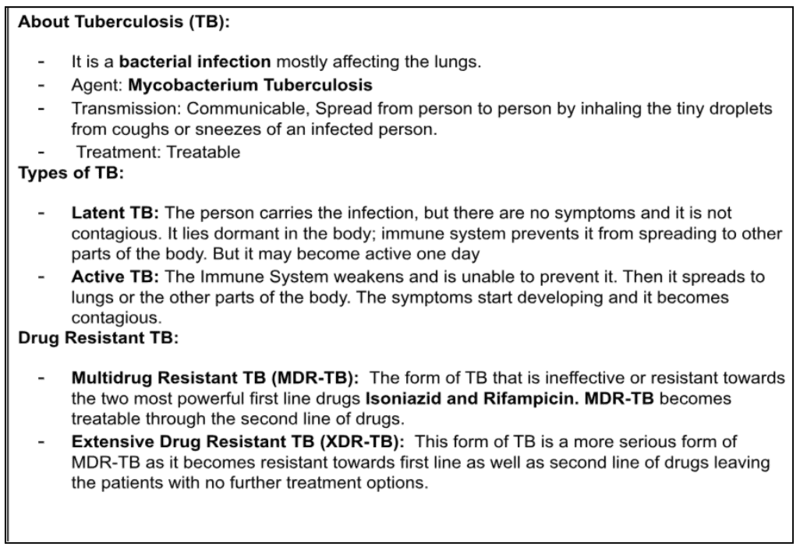GS Paper III
News Excerpt:
The Global Tuberculosis (TB) 2023 report recently released by the World Health Organization (WHO) revealed that India accounted for the highest number of TB cases in the world in 2022, accounting for 27% of the global burden.
Key Highlights of the Report:
- 7.5 million new cases of TB were recorded in 2022, making it the highest figure recorded since WHO began global TB monitoring in 1995.
- Thirty countries were responsible for 87% of the world’s TB cases in 2022.
- Top 8 high-burden countries: India (27%), Indonesia (10%), China (7.1%), Philippines (7%), Pakistan (5.7%), Nigeria (4.5%), Bangladesh (3.6%), and the Democratic Republic of Congo (3.0%).
- India recorded 2.8 million (28.2 Lakh) TB cases in 2022, with a case fatality ratio of 12%.
- 1.1 lakh cases were recorded in India with Multidrug-Resistant TB (MDR-TB).
- The net reduction from 2015 to 2022 was 8.7%, far from the WHO End TB Strategy milestone of a 50% reduction by 2025.
- The treatment success rates have improved to 88% for people treated for drug-susceptible TB and 63% for people with MDR-TB.

Challenges to Eliminating TB:
- Detection of TB: According to WHO, it is difficult to detect TB cases among children. Globally, about 1.2 million children less than 15 years of age are being affected by TB every year. 56% of the children out of 1.2 million are not detected, placing them at a higher risk of developing TB at a later age.
- Multi-Drug Resistant TB: India has recorded a rise in MDR-TB, making ~1.1 lakh people non-responsive to the first line of drugs and causing them to develop a more severe form of TB.
- COVID-19 Pandemic disruptions: As per the Global TB 2023 report, the death of 1.30 million due to TB in 2022 is on an upward trend, reaching the same level as that of 2019. This is attributed to the disruption in access to healthcare and treatment during the pandemic.
- Social stigma and mental health: Patients with TB often face isolation in healthcare systems and are discriminated against by communities and families. TB patients are thus likely to give up on the treatment.
India’s efforts to eliminate TB:
- National TB Elimination Programme (NTEP): It aims to reduce the TB burden by 2025 strategically.
- Ni-kshay Portal: The Indian government has launched an online portal to track the notified TB cases.
- Pradhan Mantri TB Mukt Bharat Abhiyan: To augment community involvement to reach India’s target of eliminating TB by 2025.
- Setting up of Machines and Laboratories: There are 4760 Molecular diagnostic machines covering all districts of the country. Also, 79 Line probe assay laboratories and 96 Liquid culture testing labs have been set up to diagnose MDR and XDR TB.
- Ni-kshay Mitras: The government launched the community engagement program to remove the social stigma associated with it. Under this program, 71,000 Ni-Kshay Mitras have adopted 10 lakh TB patients.
- Availability of New Drugs: Bedaquilline and Delamanid are provided for free for TB patients.
Way forward:
- As TB remains the world’s second-leading cause of death from a single infectious agent after COVID-19, more efforts are required toward early diagnosis, which an affordable treatment should follow.
- India must collaborate globally to develop new and effective vaccines.
- A multi-sector approach is needed to understand the key determinants like poverty, tobacco, lack of awareness, and under-nutrition, as they are some of the significant factors that cause widespread TB.


